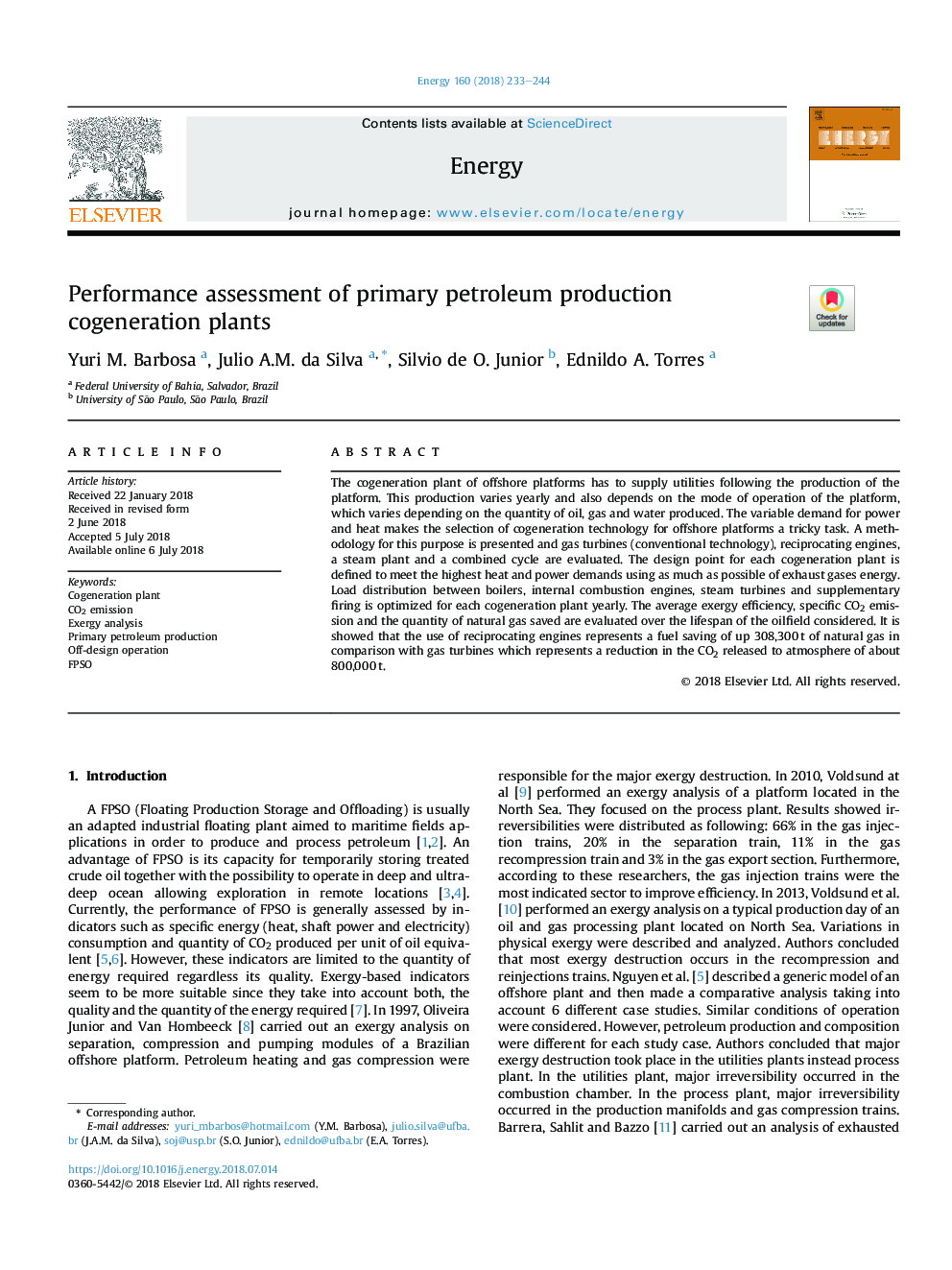| Article ID | Journal | Published Year | Pages | File Type |
|---|---|---|---|---|
| 8070948 | Energy | 2018 | 12 Pages |
Abstract
The cogeneration plant of offshore platforms has to supply utilities following the production of the platform. This production varies yearly and also depends on the mode of operation of the platform, which varies depending on the quantity of oil, gas and water produced. The variable demand for power and heat makes the selection of cogeneration technology for offshore platforms a tricky task. A methodology for this purpose is presented and gas turbines (conventional technology), reciprocating engines, a steam plant and a combined cycle are evaluated. The design point for each cogeneration plant is defined to meet the highest heat and power demands using as much as possible of exhaust gases energy. Load distribution between boilers, internal combustion engines, steam turbines and supplementary firing is optimized for each cogeneration plant yearly. The average exergy efficiency, specific CO2 emission and the quantity of natural gas saved are evaluated over the lifespan of the oilfield considered. It is showed that the use of reciprocating engines represents a fuel saving of up 308,300â¯t of natural gas in comparison with gas turbines which represents a reduction in the CO2 released to atmosphere of about 800,000â¯t.
Related Topics
Physical Sciences and Engineering
Energy
Energy (General)
Authors
Yuri M. Barbosa, Julio A.M. da Silva, Silvio de O. Junior, Ednildo A. Torres,
